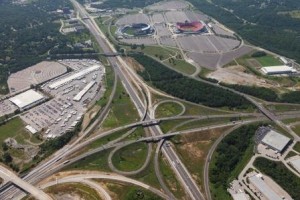 Sustainable design is no longer a novelty. A recent study estimates nearly 50 percent of non-residential construction is green, and that number continues to grow. You are likely familiar with the LEED (Leadership in Energy & Environmental Design) certification framework developed by the U.S. Green Building Council. It’s become a well-accepted method for evaluating and rating the sustainable qualities of buildings.
Sustainable design is no longer a novelty. A recent study estimates nearly 50 percent of non-residential construction is green, and that number continues to grow. You are likely familiar with the LEED (Leadership in Energy & Environmental Design) certification framework developed by the U.S. Green Building Council. It’s become a well-accepted method for evaluating and rating the sustainable qualities of buildings.
But did you know there are other options to assess sustainable performance? For infrastructure projects, there’s a framework called Envision. Jointly developed by the Harvard University Graduate School of Design and the Institute for Sustainable Infrastructure (ISI), it evaluates projects using understandable and accepted methods for measuring sustainability.
Why Apply Envision?
Our nation’s aging infrastructure will require a lot of work in the coming years. The American Society of Civil Engineers estimates an investment of $3.6 trillion is needed by 2020. It makes sense to pursue improvements that are sensitive to the environment.
That’s where Envision comes in. It helps organizations improve the design and construction of infrastructure and industrial facilities. It also considers operations, maintenance and — ultimately — decommissioning or repurposing. In addition to being sustainably smart, this holistic approach leads to a more resilient infrastructure for energy, water, transportation and other critical systems.
Measuring Criteria for Envision
Envision evaluates a project in five broad categories:
- Quality of Life: Does the project encourage sustainable development or improve public health and safety? Other areas of measurement include the enhancement of public spaces and preservation of historic and cultural resources.
- Leadership: Does the project foster collaboration and encourage stakeholder involvement? This category also supports infrastructure integration and the extension of useful life.
- Resource Allocation: This category examines the stewardship of material, energy and water resources during its life cycle. Does the project use recycled materials, divert waste from landfills, protect fresh water availability or leverage renewable energy?
- Natural World: Some of the criteria in this area focus on the project’s relationship with natural ecosystems. For example, how is stormwater handled? Are chemical impacts reduced?
- Climate and Risk: How does the project affect air quality? How will it respond to extreme weather or manmade disasters? This category also measures how adaptable the project is over the long haul.
How Does the Process Work?
The Envision process has two parts — the self-assessment phase and an optional, independent verification phase. The project team applies the Envision rating system across all applicable criteria. Typically, the team includes at least one Envision Sustainability Professional (ENV SP), who helps guide the team in assessing options and implementing practices that protect and promote the sustainability of infrastructure projects.
If the team decides to register the project and pursue verification, an ENV SP is required. The registration fee is $1,000. The verification fee depends on the size of the project. The verification phase typically takes 90 days.
Third Party Verification Ensures Objectivity
After the project team assembles supporting documentation and submits an application, a third-party Envision verifier validates the project’s self-assessment and sends it onward to an Envision authenticator for review. Once the authenticator approves the verifier’s findings, the project team is notified of the result and, if applicable, recognized with an Envision Award. A project that achieves 50 percent of the applicable points is eligible for a platinum award, 40 percent earns gold, 30 percent earns silver and 20 percent earns bronze.
Envision has been a passion of mine since the program first launched. Have you had any experience with this form of sustainable measurement? Does it sound achievable on your project? I’d love to hear your thoughts in the comments.
If this is an approach to sustainable infrastructure design that’s appealing to you, please send me an email or give me a call. It would be my pleasure to discuss this smart way to implement your project.
Doug Dietrich, MBA, ENV SP, LEED AP BD+C, PEER, is a senior sustainability specialist and Envision Program Manager for Burns & McDonnell. If you’d like to hear more about this approach to sustainable infrastructure design, you can reach out to Doug in LinkedIn.
